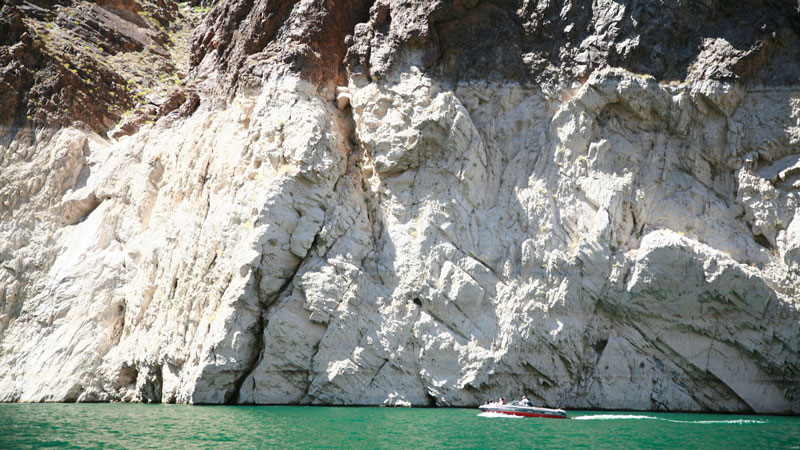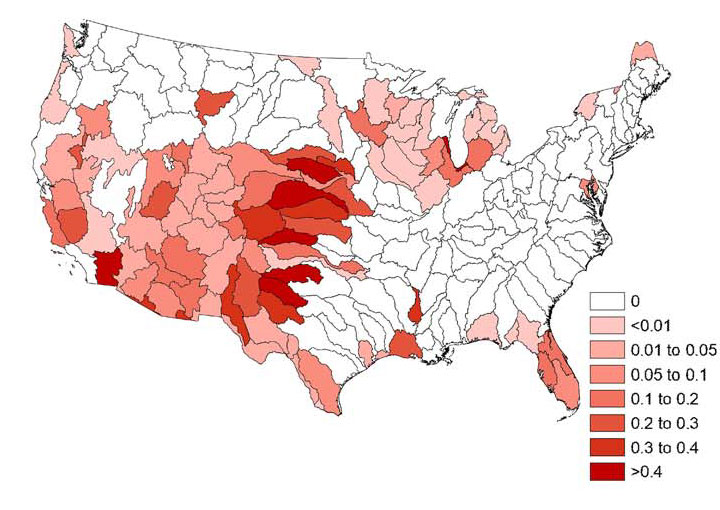
Over the 21st century, serious water shortages are likely in several areas of the U.S. unless actions are taken soon to adapt to future changes in water resources, according to a new study.
The study, published February 28, 2019, in Earth’s Future, not only looked at future trends in water supply and water demand across the contiguous U.S., but also examined which adaptation measures would be the most effective to use. The analysis showed that reductions in water use for agriculture will likely be one of our best adaptation tools.
Water shortages inevitably occur when the demand for water outpaces the water supply. In the U.S., water demand is expected to broadly increase as the population grows from its current size of approximately 328 million people to 514 million people in 2100. Meanwhile, water supplies will undergo variable changes in response to climate change. In some communities, the supplies are expected to drop as temperatures warm and droughts become more common. In other communities, supplies could increase if the precipitation increases as expected, but rising temperatures will still boost water evaporation rates and put a strain on water supplies in many areas.
Of the 204 watersheds examined in the U.S., shortages will likely occur in 83 basins in the near future (2021–2045), 92 basins in the mid-future (2046–2070), and 96 basins in the far future (2071–2095) if no adaptation measures are taken, according to the new study. These shortages are projected to happen even with continued improvements in water efficiency on pace with the rate at which water efficiency is changing today.

To stave off the shortages, the scientists used their water resource model to examine how effective several measures would be, including reservoir storage enhancements, instream flow reductions, and groundwater depletion among others. Reservoir storage enhancements, which can be used to store water when it is plentiful for later times when it is scarce, were found to be largely ineffective for many of the drought-prone regions where water for such enhancements is simply unavailable. As for diverting water from streams and rivers and tapping into more groundwater supplies, these approaches would help to reduce shortages but would carry heavy external costs. For example, excessive water withdrawals could lead to the collapse of fish populations. Hence, the authors caution against a heavy reliance on their use while acknowledging that pressure to employ these options will likely increase in the future.
Of all the options studied, reductions in water use for agriculture appeared to be the most promising for preventing water shortages. This could potentially be achieved by making drastic improvements to irrigation efficiency beyond the current pace of technological advances as well as abandoning irrigation practices on low-value crops, the scientists say.
Clearly, the future choices that many communities will have to make to maintain adequate water supplies will not be easy, as demonstrated by this sobering new study. Comprehensive planning studies such as this one can help guide communities to the best options. Future studies to explore other water conservation options would also be worthwhile. Sandra Postel, an expert on water resources issues, is championing a technologically smarter and more natural approach to fixing our broken water cycles, which could involve solutions like precision irrigation systems and wetland restoration. She recently wrote in Trend:
It’s tempting to try to solve our water problems with bigger dams, deeper wells, and longer water transfers. But as Albert Einstein reminded us decades ago, ‘We can’t solve problems by using the same kind of thinking we used when we created them.’ That means thinking differently about how we use, manage, and value water. And it means figuring out how to repair and replenish the water cycle even as we prosper. It’s a tall order. But some pioneers are showing the way.
Bottom line: Future water shortages in parts of the U.S. are likely given increasing water demands and decreasing water supplies. A new study suggests reductions in water use for agriculture may be one of the best approaches for avoiding future water shortages.











